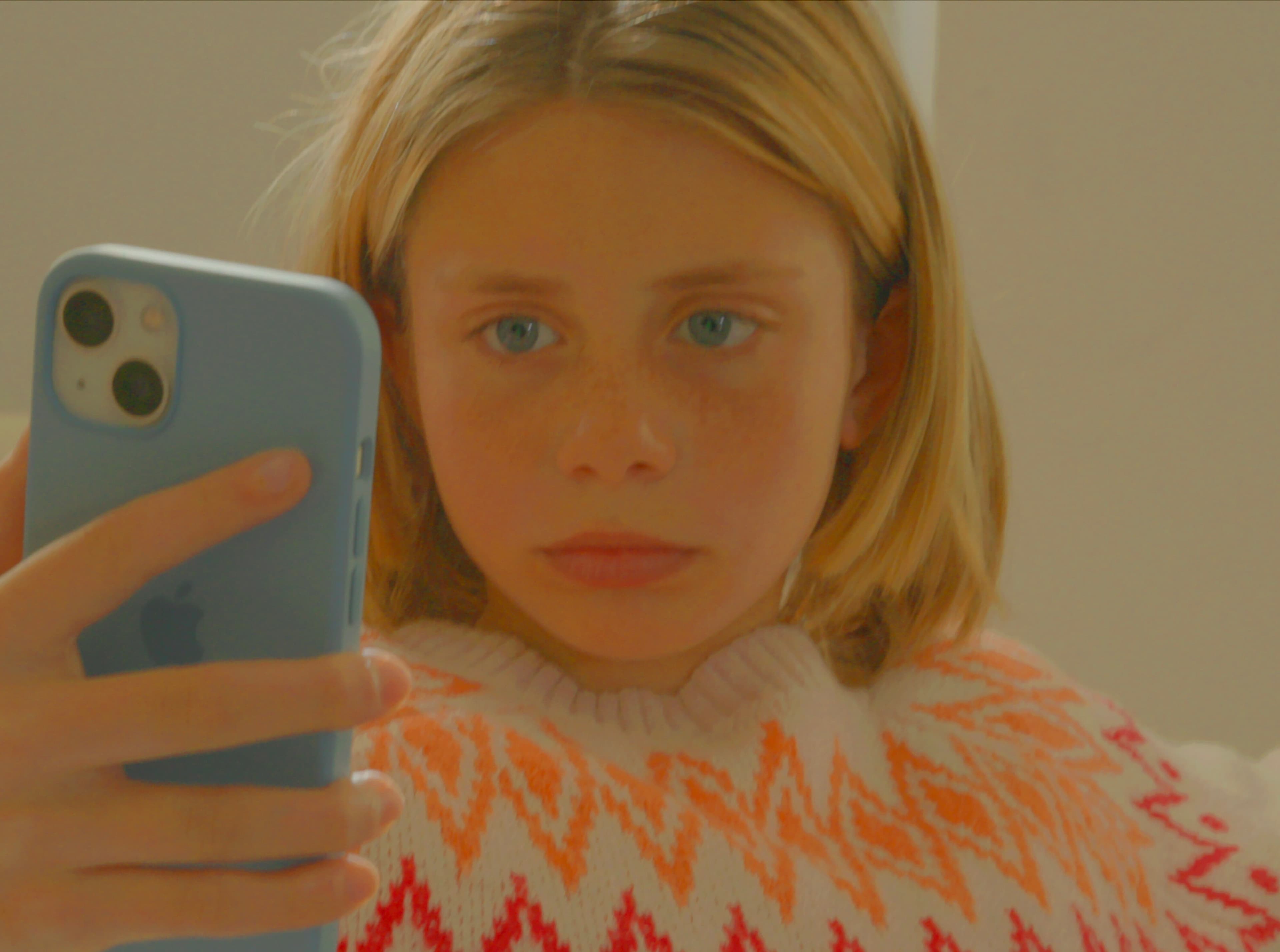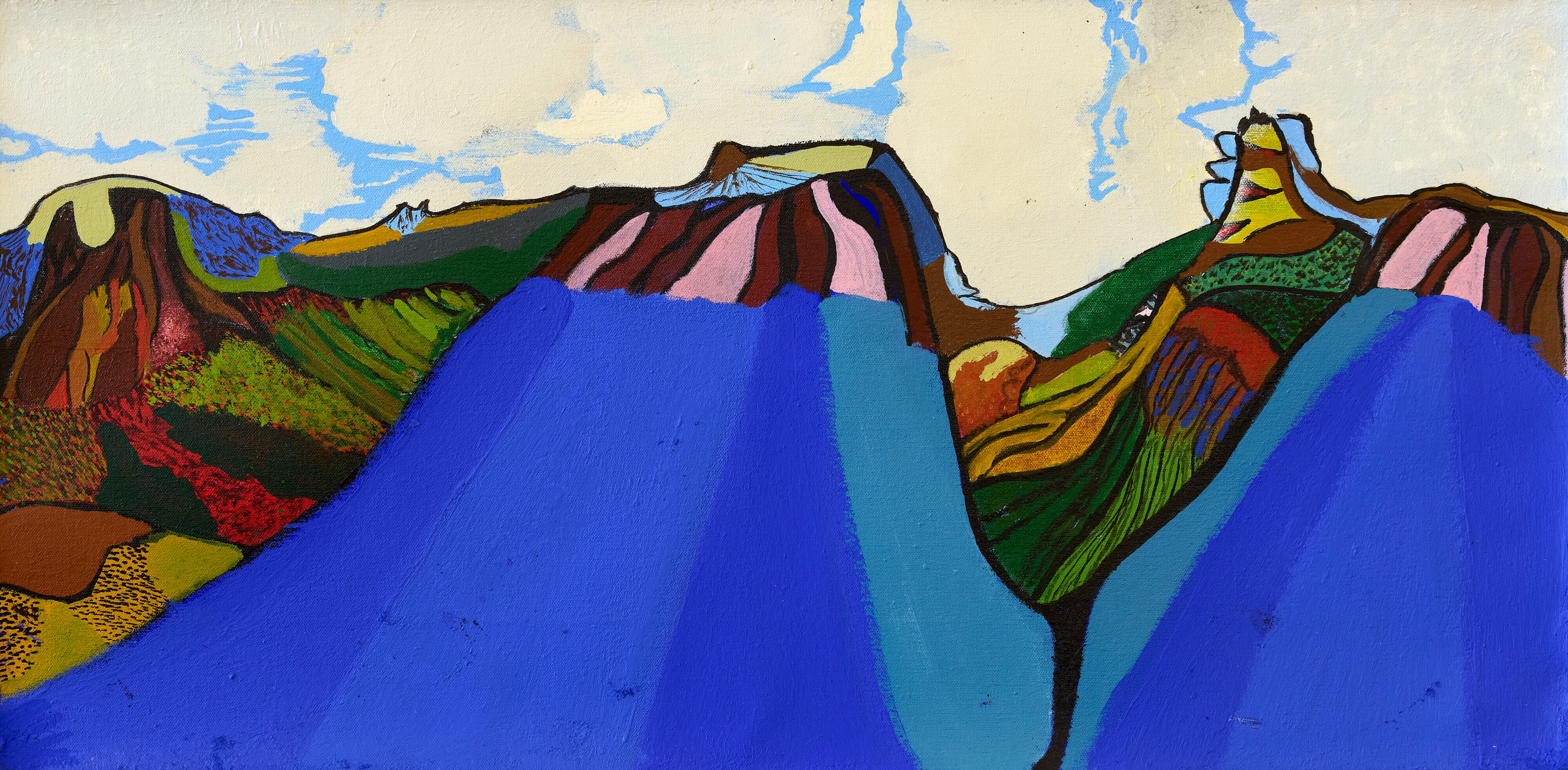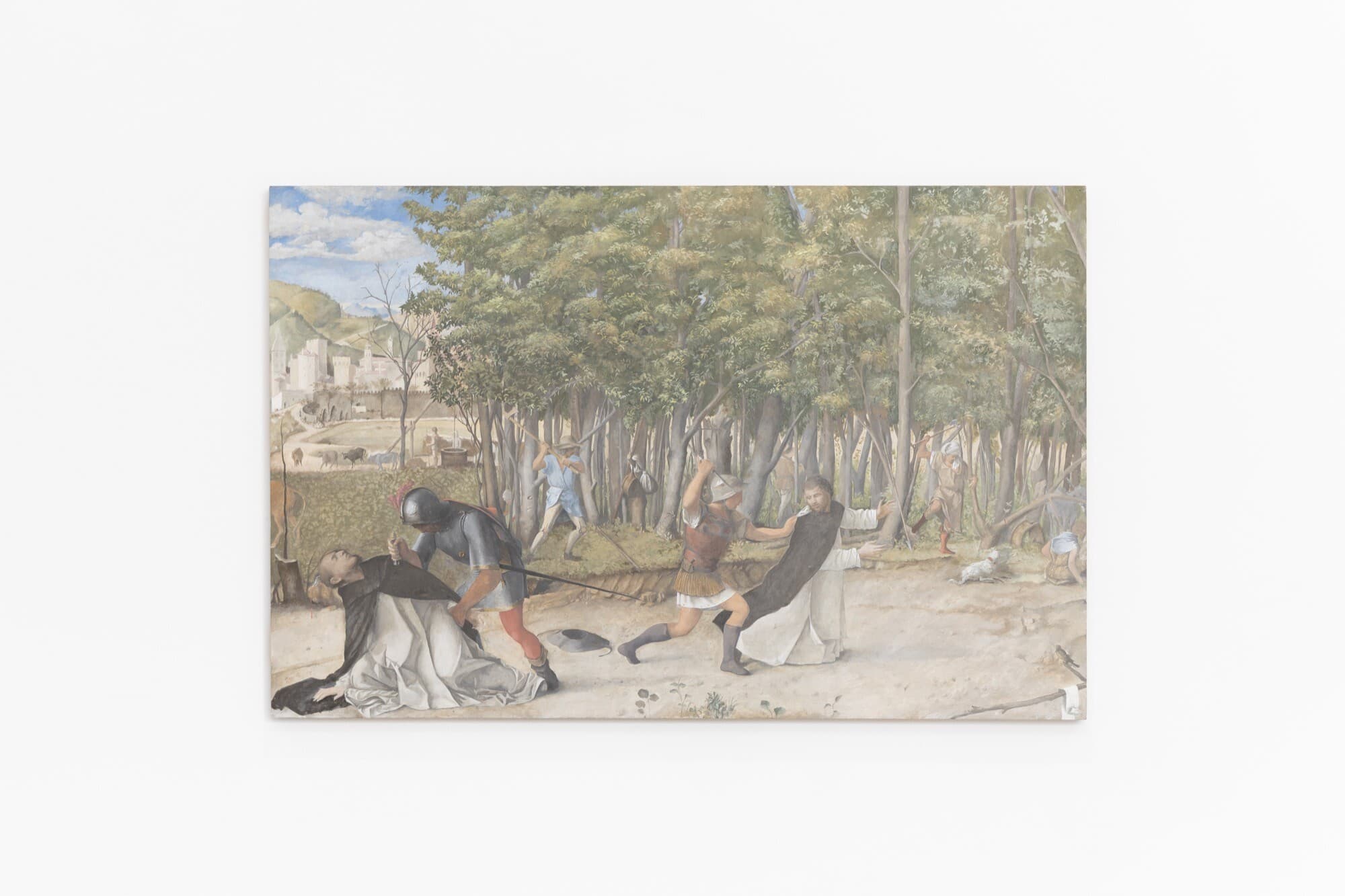Visitors in Mike Hewson: The Key’s Under the Mat in the Nelson Packer Tank at the Art Gallery of New South Wales, artworks © Mike Hewson, image © Art Gallery of New South Wales, Anna Kucera
The Key is Under the Mat
Nina Eva Caroline Stromqvist
I often think about why it’s taken, or should I say, taking, so long for art museums to embrace the public. The assumption of cultural literacy the art museum has carried with it since its beginnings is a burden that, despite many attempts to overcome it, has kept the art museum lagging behind those other institutions that house social and natural history collections. In the 1970s an eruption of exhibitions, led by Swiss curator and polymath Harald Szeeman, turned the heads of those that may never have set foot into a museum. But then, like a breath held, they seemed to fold back into the shadows under the weight of old roots. These exhibitions, collectively known as Museums of Obsessions, attempted to compel people to think about material culture as a way to tell the story of contemporary life. The exhibitions were like an archive of mental landscapes—artistically intense, embracing creative fields outside of the visual arts, while helping to excite a broader audience. When the overall structure of the exhibition, or what Szeeman liked to think of as a “total work,” became the focus, old divisions collapsed and what emerged was a kind of artistic cohesion, where each element, visual art, literature, sound, and text, was no longer isolated but part of a unified experience.
Szeeman’s sweeping international vision of contemporary culture challenged the traditional hierarchy of the arts: instead of separate disciplines, there was a fluid interplay, a continuity that made the boundaries between them feel irrelevant. One of his exhibitions, entitled Le macchine celibi or The Bachelor Machines (1975), actively sought to destroy the languages of artforms so that a new world might emerge. Artworks by Joseph Beuys shared space with eighteenth-century Megastructure drawings by neoclassical architect Etienne-Louis Boullée. Diaries, books, magazine articles, and props dazzled to form a manifesto for a new time. These juxtapositions dissolved—or seemed to dissolve for a time—the hierarchy between high and low culture, between canonical art and outsider material.
Around the same time, the American physicist Frank Oppenheimer, founder of the public learning laboratory “Exploratorium,” sat in a viewing room overlooking his exhibition spaces with the specific aim of observing how audiences interacted with the exhibits and each other. This immediate and reflexive evaluation method was an attempt to get into the minds of the public, to better understand the power of Oppenheimer’s own collection of objects across the sciences, art, and human history. While the efforts of Szeeman have gone down in history as “influential” for their expansive and insistent pursuit of a visual language for everyone, Oppenheimer’s panoptic perspective of human behaviour helped pave the way for a total re-think of the museum as dependent on a kind of reciprocal dialogue between object and audience.
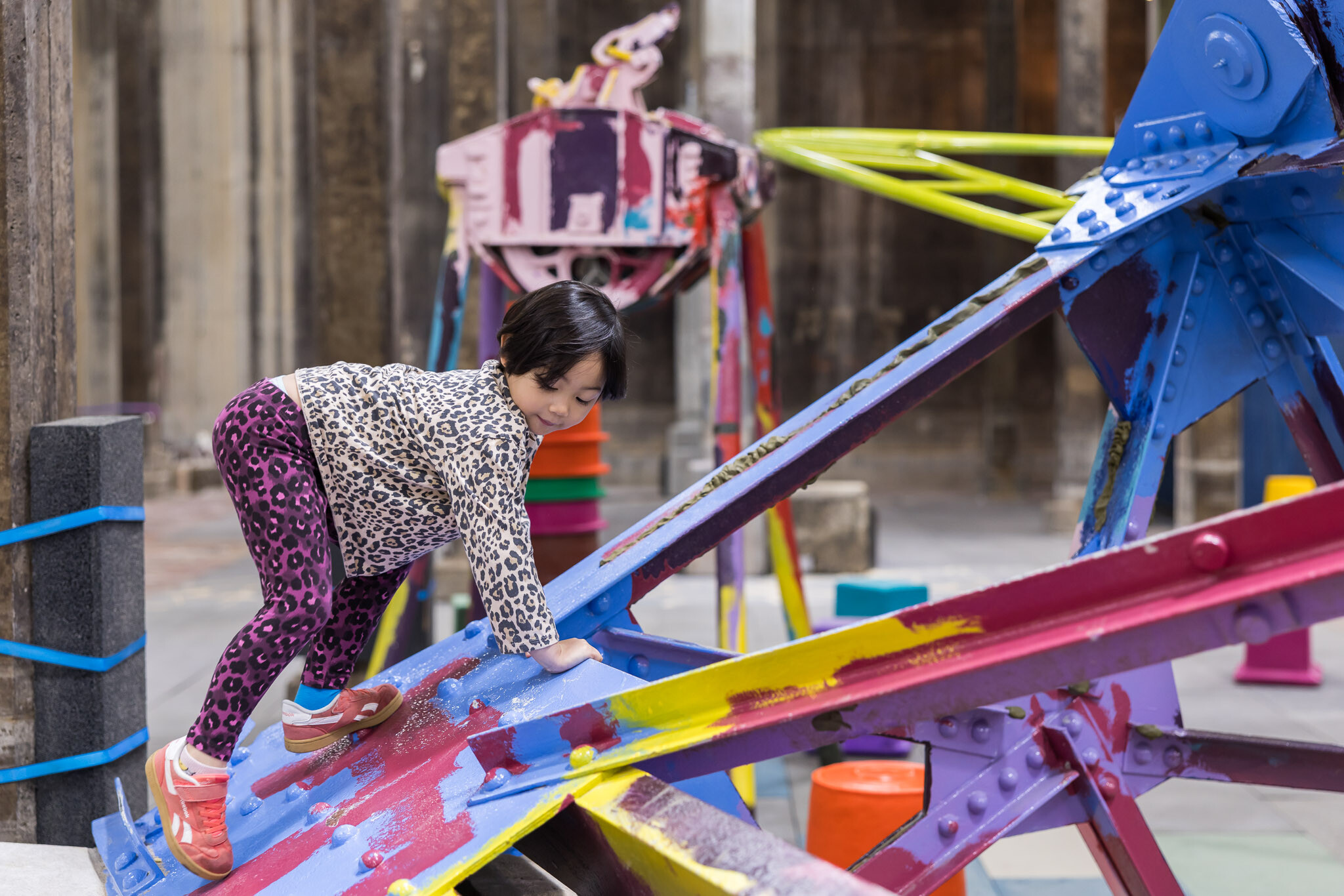
Visitor in Mike Hewson: The Key’s Under the Mat in the Nelson Packer Tank at the Art Gallery of New South Wales, artworks © Mike Hewson, image © Art Gallery of New South Wales, Anna Kucera
These moments, whether Szeeman’s radical curatorial gestures or Oppenheimer’s observational experiments, remind us that the museum is not a fixed entity, but a site of potential transformation. They offer models for how institutions might reimagine their relationship with the public, not through simplification, but through a more genuine engagement. It is in this spirit that the Tanks at the AGNSW have become a site that has emerged as a kind of subterranean anti-museum, actively disrupting the conventions of display occurring above.
I first felt these ideas at the “Night” presentation of the 2023 exhibition Louise Bourgeois: Has the Day Invaded the Night or Has the Night Invaded the Day? Over one hundred of the late artist’s works were installed in the darkened, immersive setting of the Tanks, with floor-to-ceiling projections of unseen footage and intense sound and light. Key pieces like The Destruction of the Father (1974) and Crouching Spider (2003) appeared without commentary, alongside Jenny Holzer’s voice recordings and projected “night writings.” The experience felt more like a psychological state than a conventional homage to the objects seen upstairs in the white cube presentation of “Day.”
It’s in this spirit that Mike Hewson’s The Key is Under the Mat, currently installed in the Tanks, feels particularly resonant. But—in keeping with the Tanks as a site of curatorial “otherness”—its radical departure from a standard museum exhibition format lies with its focus on children, as audience and participant—a demographic that typically finds its place in public programming and as adjunct to main art audiences. Hewson’s background in designing child-centred playgrounds, spaces that embrace risk, autonomy, and embodied experience, feeds directly into the conceptual framework of this exhibition. His use of recycled materials sourced from Sydney’s urban fabric transforms the gallery into a kind of dystopian playscape, where the aesthetics of municipal infrastructure are reimagined as sculptural provocations.
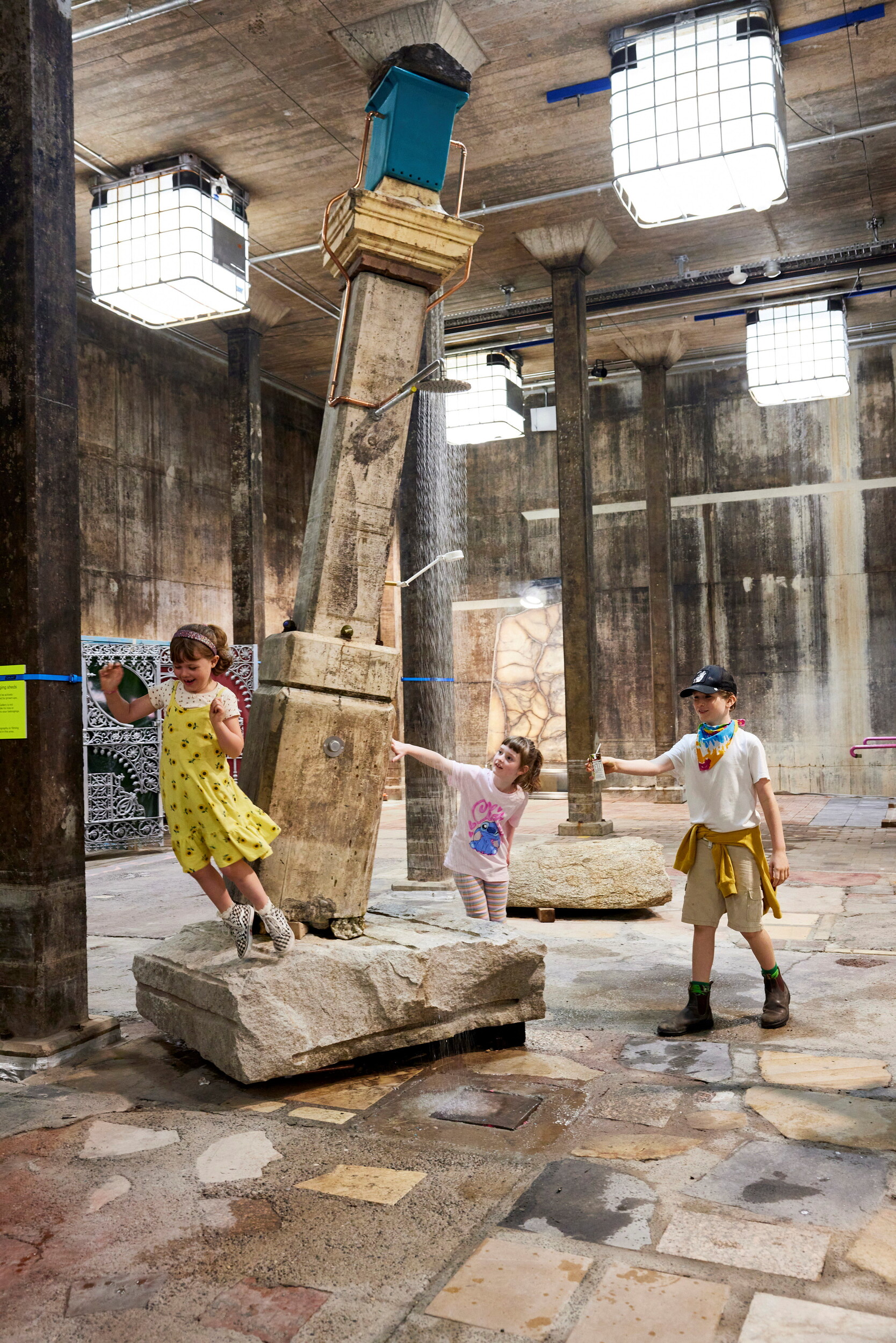
Visitors in Mike Hewson: The Key’s Under the Mat in the Nelson Packer Tank at the Art Gallery of New South Wales, artworks © Mike Hewson, image © Art Gallery of New South Wales, Anna Kucera
None of these big words mean a thing to the children who have been playing there every day since the show opened in early October, nor should they care. The strange space is inviting and joyous, brightly lit with repurposed pallet tanks suspended from the ceiling, giving off a forever midday light. The space itself follows various paths and sculptural obstacles, mostly overcome by climbing, digging, swinging, or balancing. A fully functional drainage system embedded in the floor catches the spill after participants are submerged by a giant bucket of water suspended via a pulley system. For the adults (or anyone over 16) a sauna and steamroom, repurposed from 1980’s ATCO site sheds, offer a place of respite, while special sauna and steam shorts made from recycled materials can be borrowed and laundered in washing machines suspended from an iconic hills hoist.
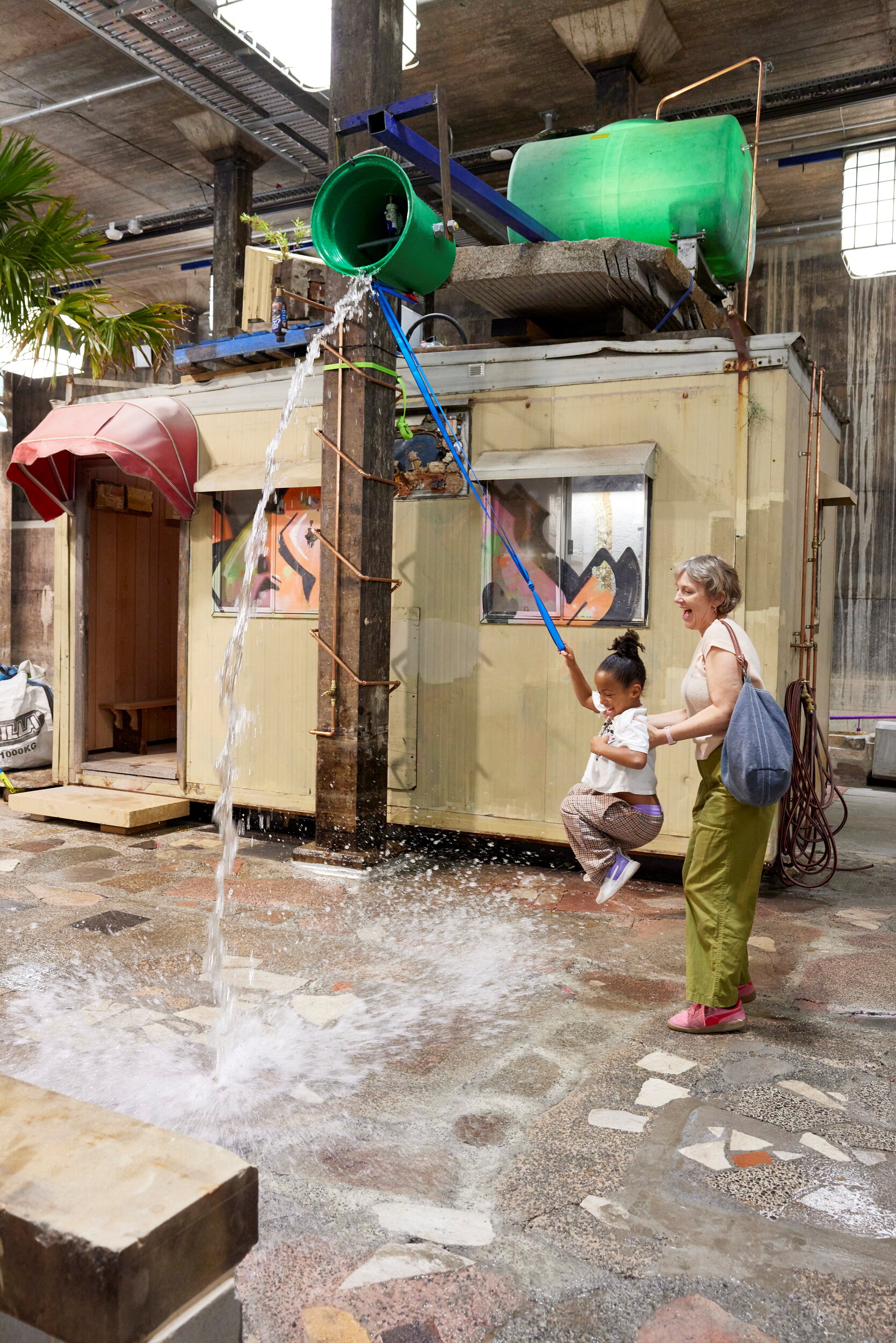
Visitors in Mike Hewson: The Key’s Under the Mat in the Nelson Packer Tank at the Art Gallery of New South Wales, artworks © Mike Hewson, image © Art Gallery of New South Wales, Anna Kucera
Drawings from local kids, imagining what their own ultimate playground would look like, occupy a converted shipping-container-cum-gallery-space, and provide insight into some of Hewson’s inspiration for the chaotic sculptural playspace. The irreverence and audaciousness of the playground is punctuated by a few strange dwellings that I’m told are residences for visiting artists: one a sound studio in a shipping container placed on top of the aforementioned children’s gallery, the other a little wooden freestanding room with recycled stained glass windows inviting curious eyes. These additions extend Hewson’s project from chaotic playspace to a kind of speculative urban ecology, focusing on a singular, reimagined reality.
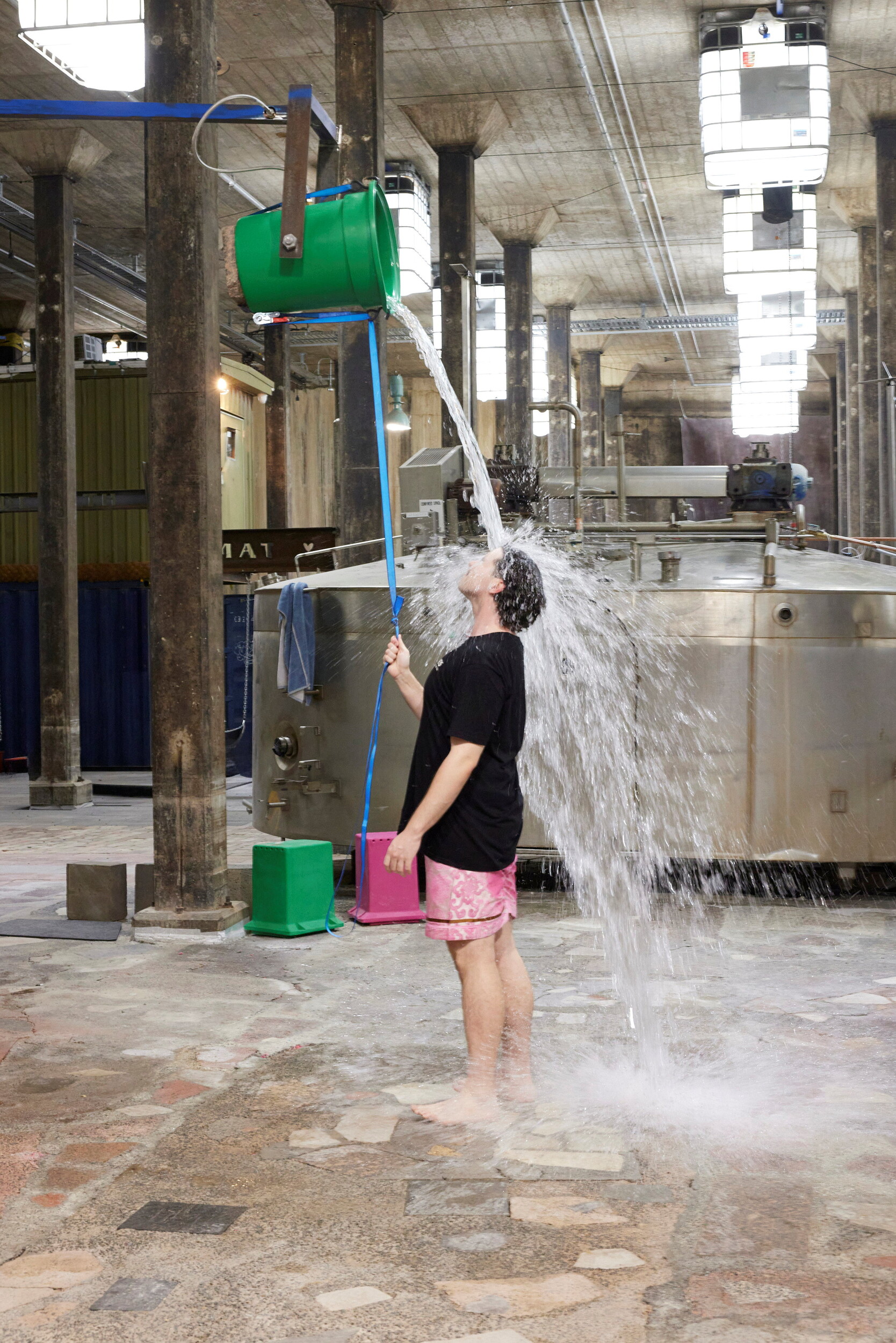
Mike Hewson testing materials in the Nelson Packer Tank, June 2024, photo © Art Gallery of New South Wales, Felicity
Despite all the buzz around opening weekend, when I began reflecting on this I had reservations on how “public” an exhibition in an art gallery can actually be. Will those who never go to art galleries suddenly be compelled to step foot into the art museum for an elusively titled exhibition in the basement? Whether it be through gallery marketing or the simple fact that kids have loved playing in Hewson’s playgrounds around Sydney for over a decade, something seems to have been shifted. On my second visit on a Tuesday around lunchtime, sausages were sizzling on a giant hot plate made from an old council road plate, and the space was absolutely buzzing with people. The gallery staff tell me that most people spend up to three hours actively playing in the space. It could have been any Sydney park at that moment, and the few wandering around who were clearly art-going folk looked slightly out of place. This transformation might echo what Oppenheimer once observed from his unique vantage point in the “Exploratorium” all those decades ago: that when visitors could manipulate real phenomena—such as turning knobs, observing reactions, and experimenting freely—they became more empowered to invent their own ways of being in the world. And perhaps Hewson is tucked behind one of his suspended palm trees, quietly enjoying the world he’s conjured, one that blurs the boundaries between art, play, and public life, inviting us to reconsider where and how art belongs.
Nina Stromqvist is a curator and lecturer currently working at UNSW Art & Design in Eora/Sydney.
